The only silver lining about not being able to travel to Paris physically is that it is surely the easiest city to visit virtually. No other place has, arguably, been as covered and celebrated in art, on the big and small screens, and, perhaps most notably of all, in literature.

Fortunately, while we’ve been waiting for borders to re-open, there has been an abundance of books about, or set in, the City of Light, to helpdeliver our Paris fix. This year alone has seen some sensational publications à la parisienne — and we’re only halfway through.
If you’re looking to replenish your book pile (as I am, given my hometown is in lockdown again, sigh), read on for some recommendations.
Bonne lecture … & bon (virtual) voyage!
With Love from Paris
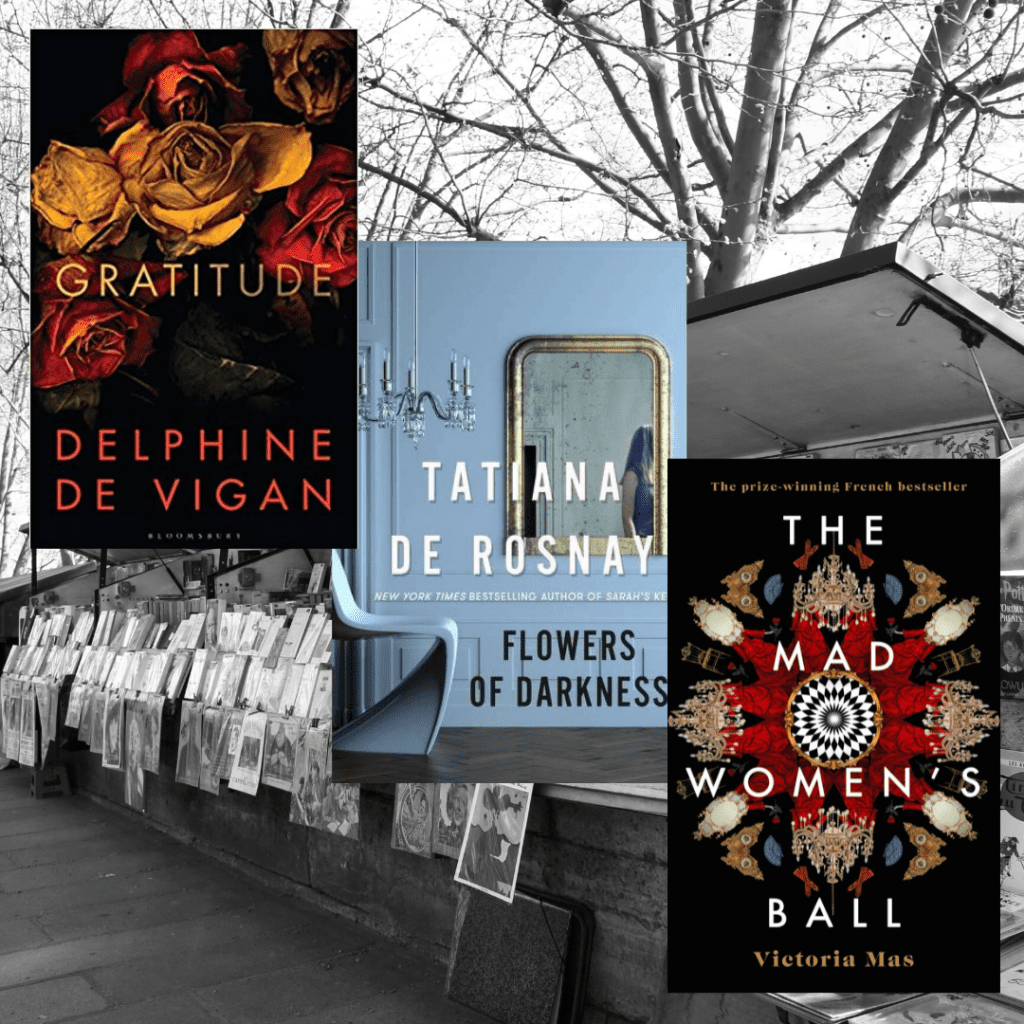
First, a shout-out to some novels that have been translated from their original French. Gratitude by Delphine de Vigan is an emotion-filled novella, written elegantly even in its bleak moments, and laced with poignant, philosophical thoughts about existence, as only a French author can do.
Tatiana de Rosnay’s latest English translation is Flowers of Darkness, which explores her favourite themes, described by her publisher as ‘the imprint of place’ and ‘the weight of secrets.’
A best-seller in France, The Mad Women’s Ball by Victoria Mas, set in a Parisian asylum in 1885, has just been released in English; make a note to read it before its September 17 movie release (Amazon Prime).
More Historical Fiction for Francophiles
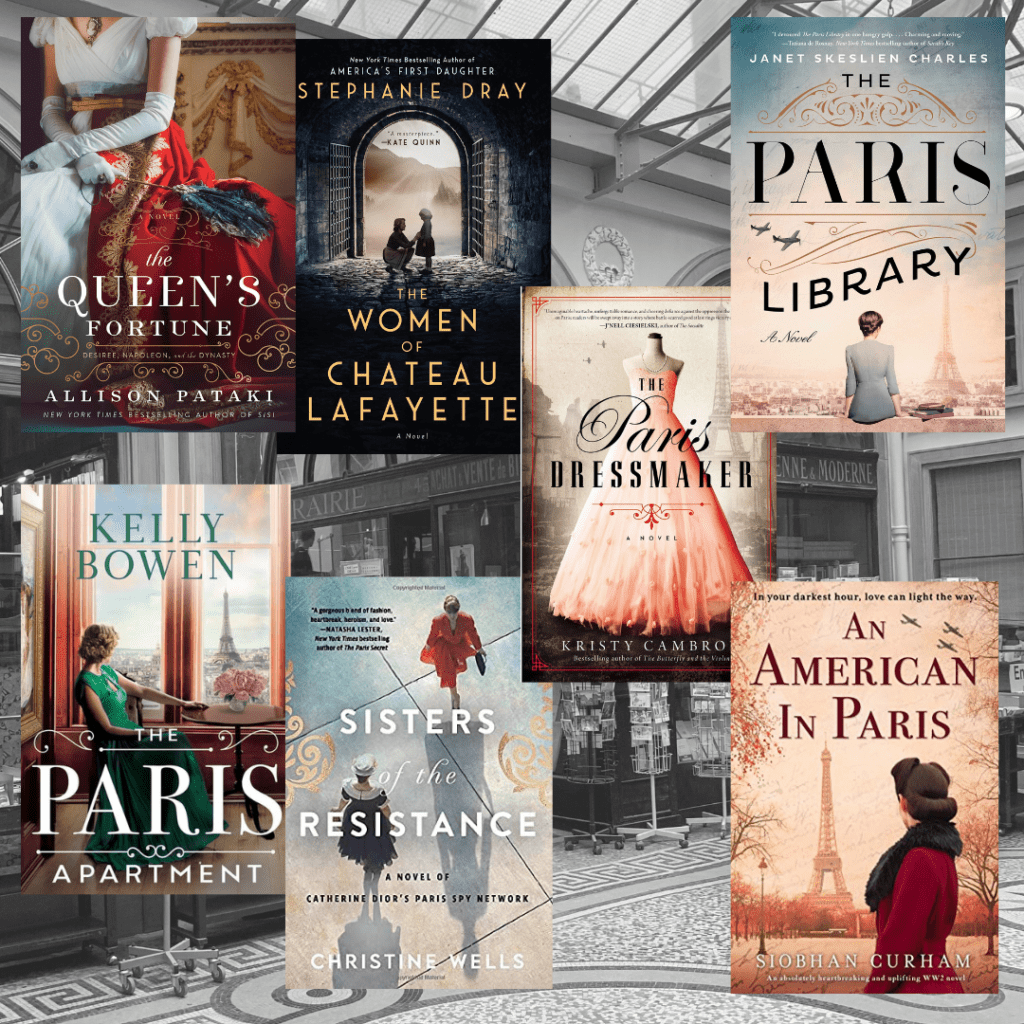
The Queen’s Fortune: Desiree, Napoleon, and the Dynasty by Allison Pataki, is a sweeping saga that unfolds in pre- and then post-revolutionary Paris, seen through the eyes of Desiree Clary, the love of Napoleon’s life before Joséphine stole that crown.
And then there’s The Women of Chateau Lafayette by Stephanie Dray — an epic novel that boasts a triple timeline — not just Revolutionary Paris and France, but also the two world wars — and a trio of engaging heroines all linked by a French castle that has a remarkable tale of its own to tell.
If you prefer your historical French fiction centred mostly around the second world war, this particular genre has only become all the more plentiful. Check out: An American in Paris by Siobahn Curham, The Paris Dressmaker by Kristy Cambron, The Paris Apartment by Kelly Bowen, Sisters of the Resistance: A Novel of Catherine Dior’s Paris Spy Network by Christine Wells, and The Paris Library by Janet Skeslien Charles.
WWII Books for History Buffs
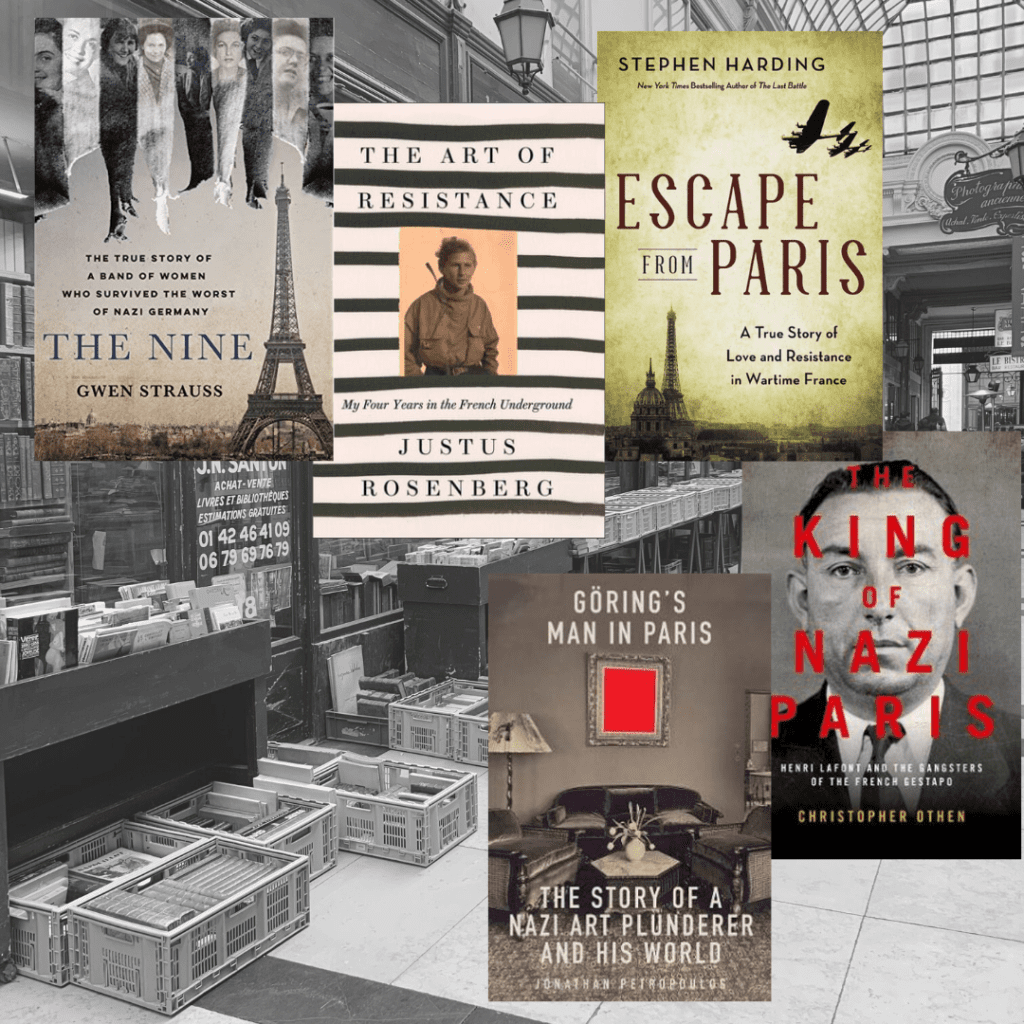
The aforementioned genre of novels set in Paris during World War II was largely inspired by Anne Sebba’s phenomenal, if devastating, book from 2016: Les Parisiennes: How the Women of Paris Lived, Loved and Died in the 1940s. If you enjoyed this (despite its heart-wrenching tales), you’ll also appreciate The Nine: The True Story of a Band of Women who Survived the Worst of Nazi Germany by Gwen Strauss.
Other recent books about Parisian wartime heroes are The Art of Resistance: My Four Years in the French Underground by Justus Rosenberg and Escape from Paris: A True Story of Love and Resistance in Wartime France by Stephen Harding.
And if you have the stomach to read about the villains of that dark period of history: Goering’s Man in Paris: The Story of a Nazi Art Plunderer and his World by Jonathan Petropoulos and The King of Nazi Paris: Henri Lafont and the French Gestapo by Christopher Othen.
More on French Jewish History
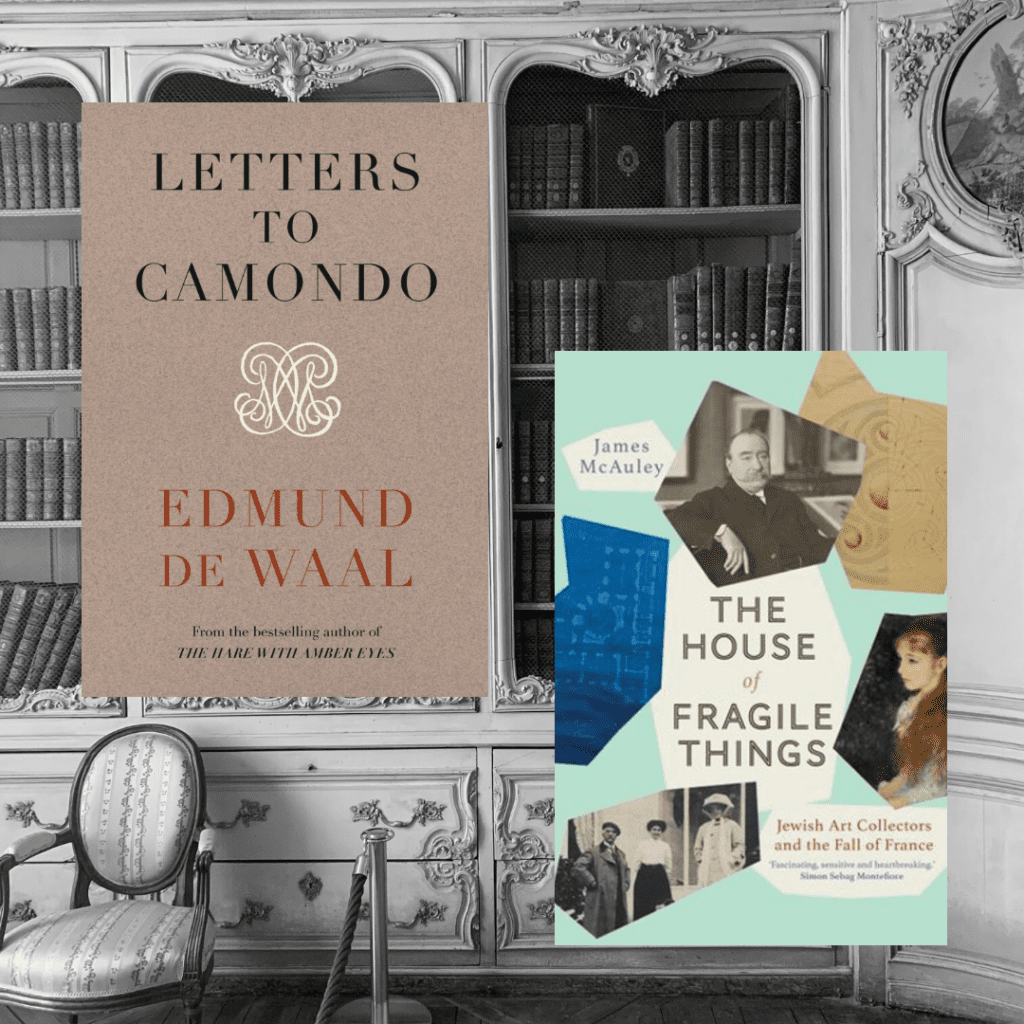
You only need to have read a few non-fiction pages about 1940s France to realise that this war wasn’t all black and white, neatly divided into goodies and baddies. There was evil on the French side as well — the collaborators, racketeers, denouncers … You soon see, with a heavy heart, that anti-Semitism was alive and well in France, too (even if not to the overt degree as it was in Germany). Edmund de Waal’s The Hare with the Amber Eyes, a 2010 sleeper hit that sells strongly to this day, explored the prejudice suffered by the Ephrussi, a once super-wealthy, art-loving European Jewish banking dynasty, from the Belle Époque onwards. The author’s follow-up, Letters to Camondo, also poignantly contrasts the pursuit of beauty with the ugliness of reality.
If you want to take this theme further: the newly released House of Fragile Things: Jewish Art Collectors and the Fall of France by James McAuley examines how patriotic Jewish French families came to be betrayed by the nation they loved.
Staying in the Past …
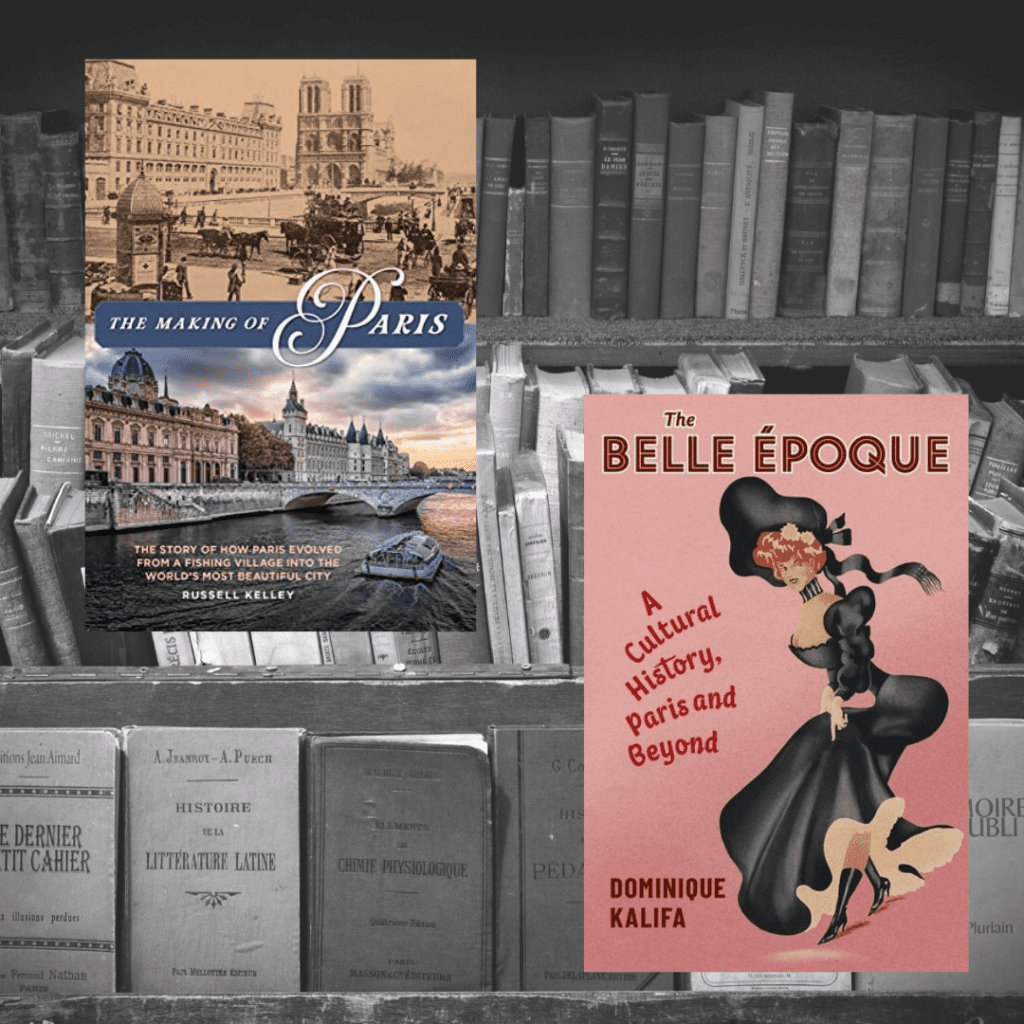
Picking up on the topic of the so-called Beautiful Era is The Belle Époque: A Cultural History, Paris and Beyond; author Dominique Kalifa looks at the latter-day mythologisation of the period between the Franco-Prussian and First World Wars.
If you’re after a more general history of Paris, look up The Making of Paris: The Story of how Paris Evolved from a Fishing Village into the World’s Most Beautiful City by Russell Kelley.
Finally, Something a Little Lighter …
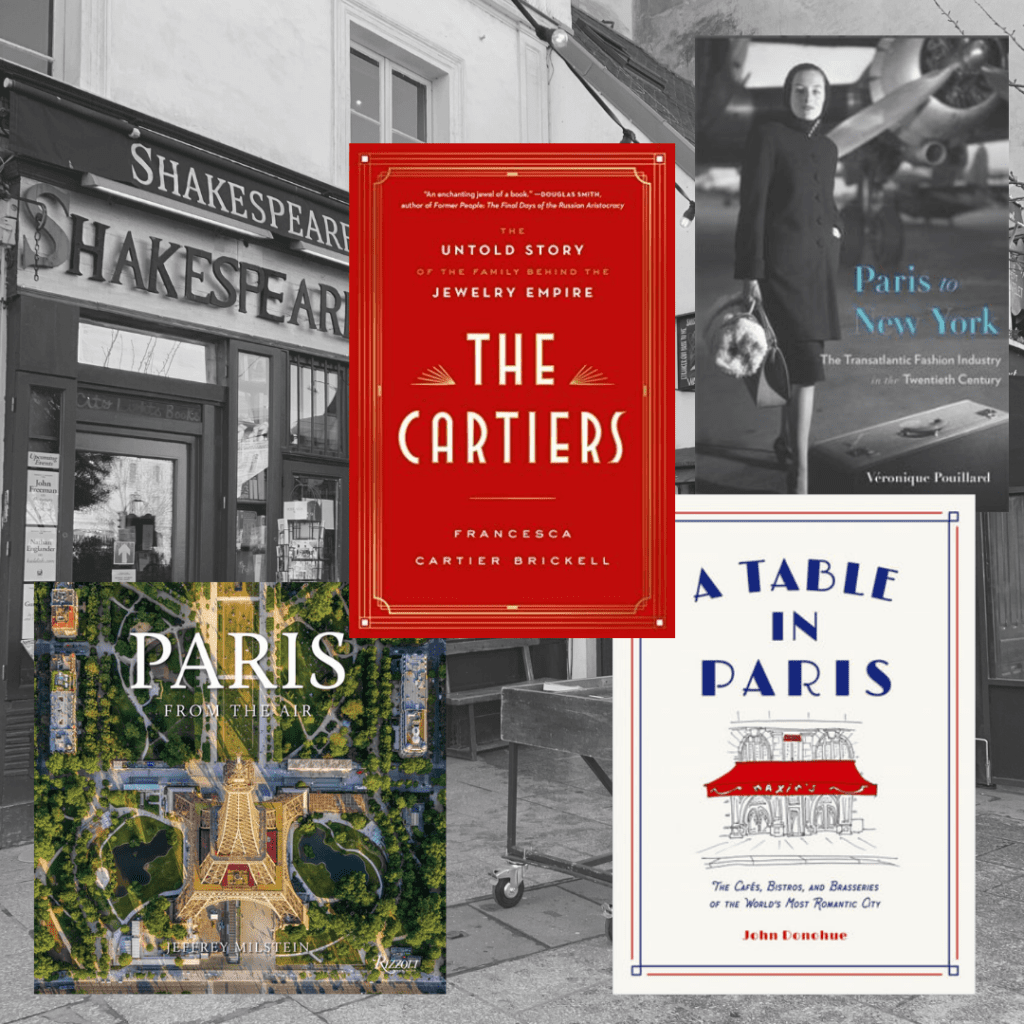
Despite Paris’s complicated history, the city is also, of course, the capital of so much beauty. There’s fashion, for one. For more about the city’s history as the centre of style, see Paris to New York: The Transatlantic Fashion Industry in the Twentieth Century by Véronique Pouillard and The Cartiers: The Untold Story of the Family Behind the Jewelry Empire by Francesca Cartier Brickell.
Paris is about haute cuisine as much as haute couture. A Table in Paris: The Cafés, Bistros and Brasseries of the World’s Most Romantic City by John Donohue will have your mouth watering at the thought of your first post-pandemic Parisian feasts.
And, finally, there’s architecture. A sumptuous new way to admire the city’s grandeur is via the glossy photographic time Paris from the Air by Jeffrey Milstein.

